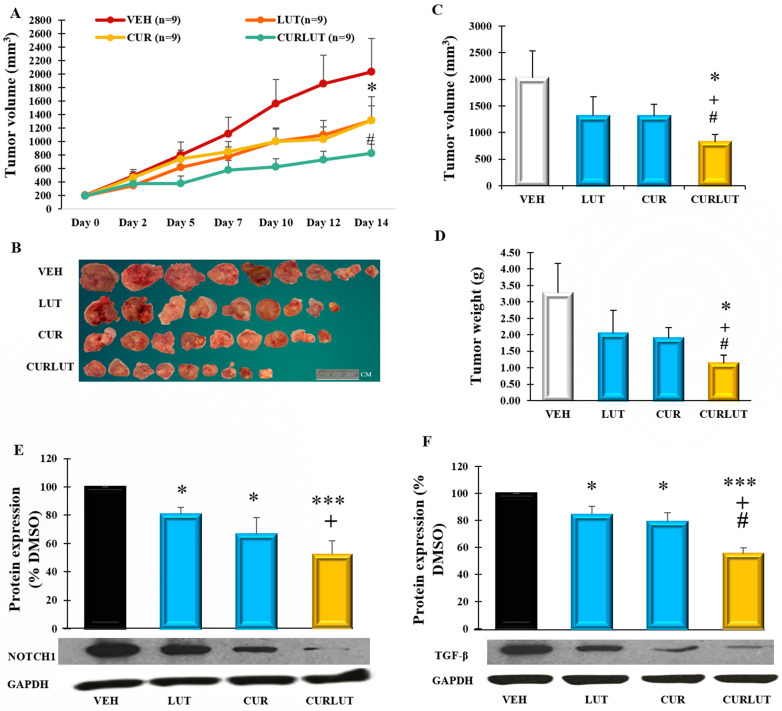Figure 4.
Combination of curcumin (CUR) and luteolin (LUT) suppressed colon cancer tumor growth in CL-188 cell-derived xenograft mice; 100 µL of CL-188 cells mixed with Matrigel and HBSS in ratio 1:1 was injected into the flank of BALB/C nude mice. Tumor volume was monitored thrice a week. Mice with similar body weight and tumor volume were assigned into one of four groups (average tumor volume of 200 mm3/group) to receive vehicle (VEH, 5% DMSO, 5% Tween20, 90% PBS), LUT (10 mg/kg/day), CUR (20 mg/kg/day) or the combination (CURLUT, LUT at 10 mg/kg/day + CUR at 20 mg/kg/day) via intraperitoneal injection daily, allowing 2 days rest for 2 weeks (14 days). (A). A line showing tumor volume with time across all treatment groups of VEH, LUT, CUR, and CURLUT. (B). Illustration of tumor sizes from all groups. (C). A bar graph showing the average tumor volume in mm3 across all treatment groups. (D). A bar graph showing the average tumor weight of mice expressed in grams (g) between groups. (E). Bar graph indicating the level of Notch1 in tumors of mice treated. (F). Bar graph indicating the level of TGF-β in tumors. Data were expressed as means ± SEM of the animals, n = 9 mice/group. * Significant difference between group and VEH group, +, significant difference between group and LUT group, #, significant difference between group and CUR group. *, +, # p < 0.05, ***, p < 0.001. Please see original WB images in Supplementary Figure S2.

